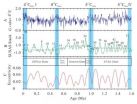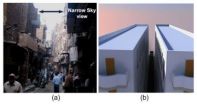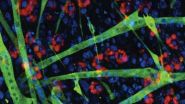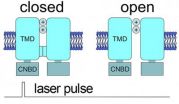(Press-News.org) Glacial cycles at 104-yr time scale have been the focus of Quaternary paleoclimatology over the last century. In recent years with the emergence of continuous high-resolution records (ice cores, deep-sea sediments etc.) from the longer geological past, increasing evidence underscores the significance of long- duration processes at the time scale of 105-yr or more. WANG Pinxian and colleagues from the State Key Laboratory of Marine Geology, Tongji University, reviewed long-term variations in the oceanic carbon reservoir and indicated their crucial role in major climate regime changes over Quaternary glacial cycles. This work, entitled "Long-term cycles in the carbon reservoir of the Quaternary ocean: a perspective from the South China Sea", was published in National Science Review. 2014, Vol 1(1): 120-144.
A puzzling question in Quaternary paleoclimatology is why the interglacials are different, even with similar orbital parameters? The recent findings in the South China Sea offer a new clue for its solution. In well preserved deep-sea sediment sections recovered by Ocean Drilling Program Leg 184 of the South China Sea in 1999, three long-term cycles (~500 kyr) in Pleistocene carbon isotope (δ13C) sequence have been found and demonstrated to be common in the global ocean (Figure 1). Because carbon has a residence time of 105-yr in the ocean, the long-term cycles are best represented by oceanic δ13C. Before the Pleistocene, the oceanic δ13C sequences display a 400-kyr signal related to the long-eccentricity of orbital forcing, with carbon isotope maximum events (δ13Cmax) occurring at the eccentricity minimum. The long eccentricity 400-kyr cycles of δ13C can be hypothetically explained by changes in ratio between particulate and dissolved organic carbon (POC/DOC) in the ocean, depending on the monsoon-controlled nutrient supply.
After 1.6 Ma, however, the 400-kyr cycle in δ13C is obscured. The δ13C maxima are out of phase with the eccentricity signal, extending the periodicity to ~500-kyr(Fig.1). The paper explains that the ocean restructuring at 1.6 Ma marked by the isolation of a sluggish abyss under the Southern Ocean could have disturbed the long eccentricity rhythm in the oceanic carbon reservoir and extended the 400-kyr cyclicity of δ13C.
Interestingly, long-term processes of 105-yr exist also in the hydrological (ice sheet changes) cycles. The last million-year period has experienced two major changes in the climate regime, namely the mid-Pleistocene transition (MPT, centered at 0.9 Ma) and mid-Brunhes event (MBE, at 0.4 Ma). The MPT represents intensification and prolongation of the glacial /interglacial cycles from 41- to 100-kyr frequencies, while the MBE is considered as a critical period of transition to enhanced amplitudes of glacial/interglacial cycles. Thus, the South China Sea records reveal that long-term processes in ice-sheet and carbon cycles are connected.
As seen from Figure 2, the MPT and MBE were preluded by δ13C max-III∼1.0 Ma and δ13Cmax-II ∼0.5 Ma, respectively, and both the δ13Cmax events were in turn prefaced by unusually warm interglacials in the Antarctic region (Table 1). The causal link between these long-term processes remains unclear, but one of the crucial mechanisms could be the nutrient transfer from the Southern Ocean northward, which led to major changes in the biological pump of the global ocean. The paper concludes that the long-term biogeochemical processes originating from the Southern Ocean must have played a crucial role in ice-sheet waxing and waning, and the major environmental events in the Quaternary comprise a continuing chain of events that remain a largely ignored aspect in climate studies.
INFORMATION:
See the article:
Long-term cycles in the carbon reservoir of the Quaternary ocean: a perspective from the South China Sea
http://nsr.oxfordjournals.org/content/1/1/119.abstract
Climate change: The role of oceanic carbon reservoir over glacial cycles
2014-04-14
ELSE PRESS RELEASES FROM THIS DATE:
Genetically modified tobacco plants as an alternative for producing bioethanol
2014-04-14
Tobacco, a high-density crop which is mown several times throughout its cycle, can produce as much as 160 tonnes of fresh matter per hectare and become a source of biomass suitable for producing bioethanol. As Jon Veramendi, head of the plant Agrobiotechnology research group, explained, "tobacco plants as a source of biomass for producing bioethanol could be an alternative to traditional tobacco growing which is in decline in the USA and in Europe because it cannot compete with emerging countries like China".
In the course of the research, which has been echoed by the ...
Puget Sound's rich waters supplied by deep, turbulent canyon
2014-04-14
The headwaters for Puget Sound's famously rich waters lie far below the surface, in a submarine canyon that draws nutrient-rich water up from the deep ocean. New measurements may explain how the Pacific Northwest's inland waters are able to support so many shellfish, salmon runs and even the occasional pod of whales.
University of Washington oceanographers made the first detailed measurements at the headwater's source, a submarine canyon offshore from the strait that separates the U.S. and Canada. Observations show water surging up through the canyon and mixing at surprisingly ...
Study links domestic abuse to mental health problems in new mothers
2014-04-14
A new study shows that domestic abuse is closely linked to postpartum mental health problems, including depression and post-traumatic stress disorder (PTSD), in mothers. The research also found that specific types of abuse are associated with specific mental health problems. The work was done by researchers at North Carolina State University, Simon Fraser University and the University of British Columbia.
"We wanted to see whether and how intimate partner abuse – physical, psychological and sexual – influenced postpartum mental health in women, including problems such ...
Neanderthals and Cro-magnons did not coincide on the Iberian Peninsula
2014-04-14
This news release is available in Spanish. Until now, the carbon 14 technique, a radioactive isotope which gradually disappears with the passing of time, has been used to date prehistoric remains. When about 40,000 years, in other words approximately the period corresponding to the arrival of the first humans in Europe, have elapsed, the portion that remains is so small that it can become easily contaminated and cause the dates to appear more recent. It was from 2005 onwards that a new technique began to be used; it is the one used to purify the collagen in DNA tests. ...
Let the sun shine in: Redirecting sunlight to urban alleyways
2014-04-14
WASHINGTON, April 14—In dense, urban centers around the world, many people live and work in dim and narrow streets surrounded by tall buildings that block sunlight. And as the global population continues to rise and buildings are jammed closer together, the darkness will only spread.
To alleviate the problem, Egyptian researchers have developed a corrugated, translucent panel that redirects sunlight onto narrow streets and alleyways. The panel is mounted on rooftops and hung over the edge at an angle, where it spreads sunlight onto the street below. The researchers describe ...
Wolves at the door: Study finds recent wolf-dog hybridization in Caucasus region
2014-04-14
Dog owners in the Caucasus Mountains of Georgia might want to consider penning up their dogs more often: hybridization of wolves with shepherd dogs might be more common, and more recent, than previously thought, according to a recently published study in the Journal of Heredity (DOI: 10.1093/jhered/esu014).
Dr. Natia Kopaliani, Dr. David Tarkhnishvili, and colleagues from the Institute of Ecology at Ilia State University in Georgia and from the Tbilisi Zoo in Georgia used a range of genetic techniques to extract and examine DNA taken from wolf and dog fur samples as well ...
Regenerating muscle in Duchenne muscular dystrophy: Age matters
2014-04-14
LA JOLLA, Calif., April 11, 2014 — A team of scientists led by Pier Lorenzo Puri, M.D., associate professor at Sanford-Burnham Medical Research Institute (Sanford-Burnham), in collaboration with Fondazione Santa Lucia in Rome, Italy, have published details of how a class of drugs called "HDACis" drive muscle-cell regeneration in the early stages of dystrophic muscles, but fail to work in late stages. The findings are key to furthering clinical development of HDACis for Duchenne muscular dystrophy (DMD), an incurable muscle-wasting disease.
A symphony to rebuild muscle
The ...
New 'tunable' semiconductors will allow better detectors, solar cells
2014-04-14
One of the great problems in physics is the detection of electromagnetic radiation – that is, light – which lies outside the small range of wavelengths that the human eye can see. Think X-rays, for example, or radio waves.
Now, researchers have discovered a way to use existing semiconductors to detect a far wider range of light than is now possible, well into the infrared range. The team hopes to use the technology in detectors, obviously, but also in improved solar cells that could absorb infrared light as well as the sun's visible rays.
"This technology will also ...
A stable model for an unstable target
2014-04-14
A study in The Journal of General Physiology provides new insights about singlet oxygen and sets the stage for better understanding of this highly reactive and challenging substance.
Singlet oxygen is an electronically excited state of oxygen that is less stable than normal oxygen. Its high reactivity has enabled its use in photodynamic therapy, in which light is used in combination with a photosensitizing drug to generate large amounts of singlet oxygen to kill cancer cells or various pathogens.
Light-generated singlet oxygen also plays a role in a range of biological ...
Better solar cells, better LED light and vast optical possibilities
2014-04-14
Changes at the atom level in nanowires offer vast possibilities for improvement of solar cells and LED light. NTNU-researchers have discovered that by tuning a small strain on single nanowires they can become more effective in LEDs and solar cells.
NTNU researchers Dheeraj Dasa and Helge Weman have, in cooperation with IBM, discovered that gallium arsenide can be tuned with a small strain to function efficiently as a single light-emitting diode or a photodetector. This is facilitated by the special hexagonal crystal structure, referred to as wurtzite, which the NTNU ...









